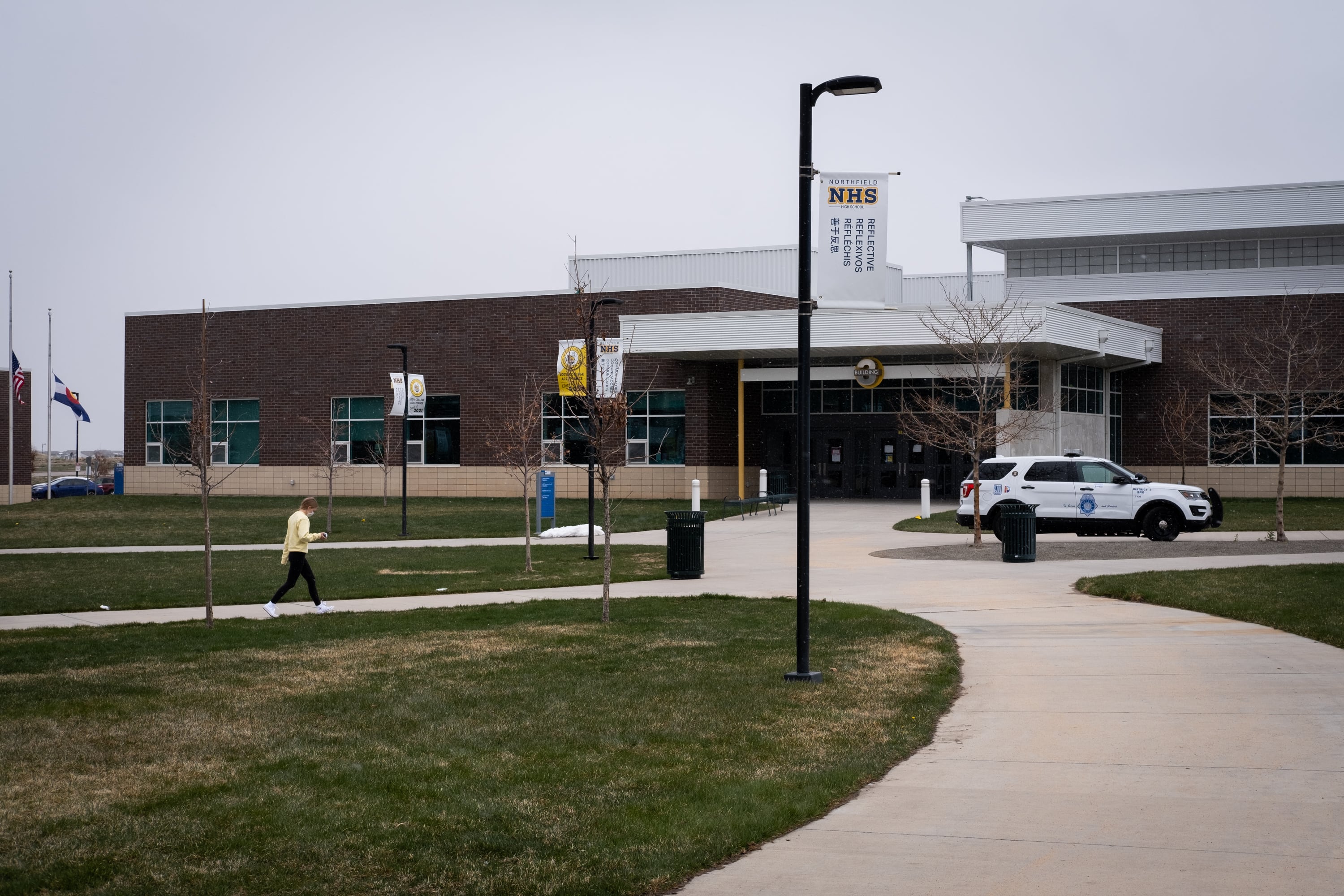School districts across the U.S. are renovating their buildings and upgrading dilapidated ventilation systems with the help of $190 billion of federal COVID relief.
But these improvements will take time, and some won’t be completed for years after the pandemic first disrupted schooling.
The improvements have gotten the blessing of the U.S. Department of Education, which has encouraged ventilation upgrades. And there’s good evidence that such projects will benefit students: Research has found a direct link between air quality and student success, and students in classrooms that aren’t air conditioned tend to learn less on hot days.
Still, the plans reveal an awkward reality: With limited options for spending a big, one-time chunk of money, school districts are using part of it for expensive facilities projects, which may have only a tenuous connection to the pandemic and will take years to complete.
Now, some school leaders want more time. The national school superintendents’ association and other groups recently asked the U.S. Department of Education for an extra two years to spend the money so construction projects can be planned and completed.
“I don’t necessarily think that facilities spending seems to be a bad way to spend it,” said American Enterprise Institute senior fellow Nat Malkus, who recently analyzed COVID relief dollars for schools. But, he added, “It’s certainly not under the original intent of the bill.”
Schools in White Plains, New York plan to spend $6.9 million in federal funds on building renovations. Those include a district-wide upgrade of its heating, ventilation and air conditioning systems, which will bring air conditioning to many classrooms for the first time. The building improvements will constitute the majority of the district’s $9.8 million from the American Rescue Plan, the largest and most recent federal aid package.
“We would never have been able to accomplish this type of a project without a major bond and an impact to the taxpayer,” district superintendent Joseph Ricca said. “The benefits to the children and to the community are huge and they’re going to be lasting.”
The renovations should be completed in two years, he said. “While it may not be directly related to COVID — hopefully this particular pandemic is in our rearview mirror at that time — it does attend to the needs of our school facilities,” Ricca said.
Other districts are making similar plans. An analysis of more than 2,700 districts’ plans found that more than half planned to improve ventilation, which includes buying air cleaning devices or renovating HVAC systems. A trade magazine for HVAC professionals recently noted a burst in schools upgrading ventilation. Schools are also spending on other facilities improvements, too, including expanding or creating outdoor classrooms.
In Louisiana, districts have budgeted $274 million for building repairs and air quality improvements, but less than $6 million has been spent to date, suggesting the money will be used for lengthy projects.
Experts say improving ventilation is a good way to reduce the spread of COVID in indoor settings, and doing so is explicitly allowed under the two most recent federal aid packages for schools.
It’s not clear, though, that upgrades that will take years meet the law’s requirements that they are responsive to COVID. The Centers for Disease Control and Prevention recommends quicker fixes like purchasing portable air filters.
It’s up to states to decide whether districts’ plans get a green light, and many have already gotten one, including White Plains. The U.S. Department of Education has also issued guidance indicating that it views building upgrades as an acceptable use of funds. One guidance document notes that schools can use the money to “emerge stronger post-pandemic,” including by “maintaining healthy facilities.”
“Many communities are using these funds to make critical upgrades to schools that support health and safety, such as improving ventilation systems,” department spokesperson Luke Jackson said in an email.
The department does discourage districts from using the money for new construction, which appears to be far less common than upgrading existing facilities.
Malkus’ analysis for AEI, a conservative think tank, estimated that a large share of federal relief aid will likely be spent on needs not directly connected to COVID. But he’s not convinced that districts are making bad decisions by spending on facilities.
“Given the constraints they’re facing, this could be a more prudent use of funds than many others,” he said.
Indeed, the flurry of HVAC upgrades reflect a real need. A 2020 federal Government Accountability Office report estimated that one in three American school buildings need to upgrade or replace their ventilation systems. The infrastructure bill that was recently signed into law did not include any funding for school buildings.
A well-functioning HVAC system maintains healthy air circulation in a building, filters out pollutants, and keeps the temperature comfortable. Harmful chemicals in the air can set students back, but improving air filtration can counteract those effects.
Another reason that many schools are spending on infrastructure is that they only have so many ways to responsibly use one-time money, particularly in high-poverty districts that have received massive sums. If a district goes on a hiring binge or gives big raises, it will face painful layoffs or salary freezes in the years ahead. Construction or renovations, on the other hand, are temporary expenses that could come with a long-term benefit.
A new analysis by the think tank Future-Ed shows that high-poverty school districts are especially likely to budget federal money for improving buildings, perhaps because their existing facilities are worse or because they have more money at their disposal.
“Spending money on some of these critical upgrades makes a whole lot of sense to do with one-time funding,” said Sasha Pudelski, advocacy director of AASA, the superintendents’ association. “For many districts, they’ve had backlogged maintenance for years.”
Matt Barnum is a national reporter covering education policy, politics, and research. Contact him at mbarnum@chalkbeat.org.






